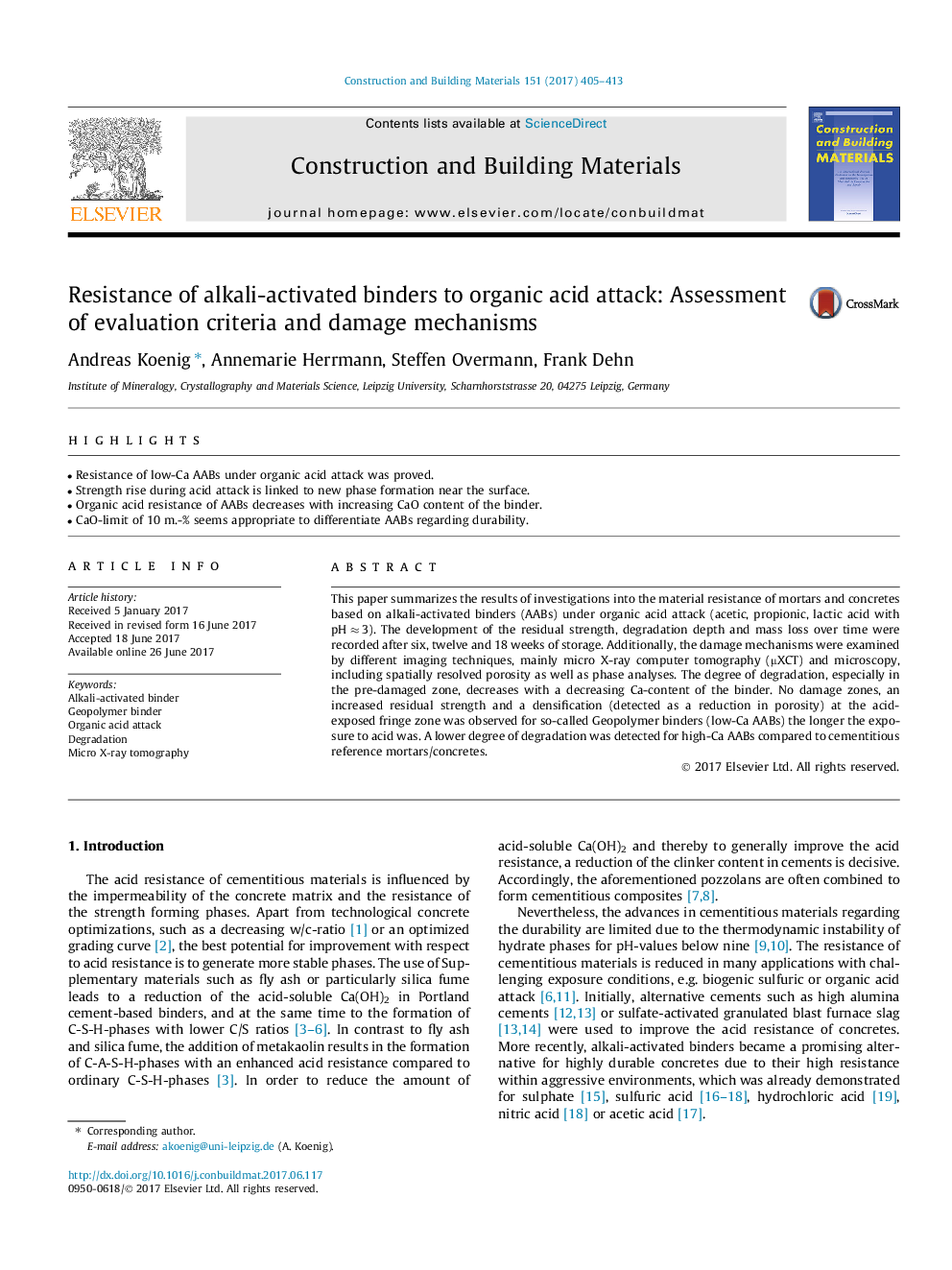| Article ID | Journal | Published Year | Pages | File Type |
|---|---|---|---|---|
| 4918196 | Construction and Building Materials | 2017 | 9 Pages |
Abstract
This paper summarizes the results of investigations into the material resistance of mortars and concretes based on alkali-activated binders (AABs) under organic acid attack (acetic, propionic, lactic acid with pH â 3). The development of the residual strength, degradation depth and mass loss over time were recorded after six, twelve and 18 weeks of storage. Additionally, the damage mechanisms were examined by different imaging techniques, mainly micro X-ray computer tomography (µXCT) and microscopy, including spatially resolved porosity as well as phase analyses. The degree of degradation, especially in the pre-damaged zone, decreases with a decreasing Ca-content of the binder. No damage zones, an increased residual strength and a densification (detected as a reduction in porosity) at the acid-exposed fringe zone was observed for so-called Geopolymer binders (low-Ca AABs) the longer the exposure to acid was. A lower degree of degradation was detected for high-Ca AABs compared to cementitious reference mortars/concretes.
Related Topics
Physical Sciences and Engineering
Engineering
Civil and Structural Engineering
Authors
Andreas Koenig, Annemarie Herrmann, Steffen Overmann, Frank Dehn,
